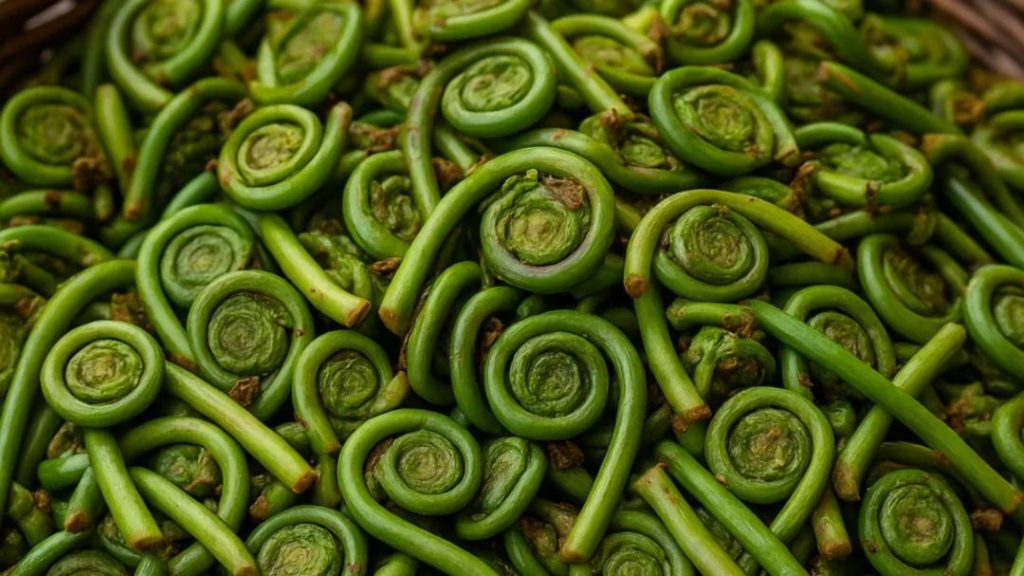
Lingad, a Monsoon Fern, Boosts Immunity and Bone Health
The Himalayas, a treasure trove of natural wonders, is home to a plethora of edible plants that have been a part of local cuisine for centuries. One such plant is the Lingad, also known as the fiddlehead fern, a young, coiled shoot that is foraged during the monsoon season. Locally known as Lengdu, Dhekia, or Nigro, this versatile fern is a staple in many Himalayan households, not only for its unique flavor but also for its numerous health benefits.
What is Lingad?
Lingad is a type of fern that belongs to the Diplazium esculentum species. It is a young, tender shoot that grows in the Himalayas during the monsoon season, typically between June and September. The fern is harvested when it is still curled and tender, before it matures and becomes fibrous and unfit for cooking.
Nutritional Value
Lingad is densely packed with nutrients, including vitamins A, C, and K, as well as minerals like calcium, iron, and potassium. It is also a good source of protein, fiber, and antioxidants. The fern’s unique nutrient profile makes it an excellent addition to a healthy diet, supporting overall well-being and immune function.
Immunity Boost
Lingad’s high levels of antioxidants and vitamins C and E make it an excellent natural immunity booster. Antioxidants help to protect the body from free radicals, which can damage cells and contribute to chronic diseases like cancer and heart disease. Vitamin C, on the other hand, plays a crucial role in the production of white blood cells, which are essential for fighting off infections. By incorporating Lingad into your diet, you can help to support your immune system and reduce your risk of illness.
Bone Health
Lingad is also an excellent source of calcium, a mineral that is essential for maintaining strong bones. Calcium helps to build and repair bones, reducing the risk of osteoporosis and fractures. In addition to calcium, Lingad also contains other minerals like magnesium and phosphorus, which are important for bone health. By consuming Lingad regularly, you can help to support bone health and reduce your risk of osteoporosis and related conditions.
Traditional Uses
Lingad has been a part of Himalayan cuisine for centuries, and is often used in a variety of dishes, including soups, stews, and stir-fries. In some regions, the fern is also used as a natural remedy for various ailments, including fever, cough, and skin conditions. The fern’s anti-inflammatory properties make it an effective treatment for reducing pain and swelling.
Preparation and Cooking
Lingad is typically harvested in the early morning, when the fern is still curled and tender. The fern is then washed and cleaned before being cooked in a variety of ways, including steaming, sautéing, and boiling. The fern’s unique flavor is often enhanced by adding aromatics like garlic, ginger, and onions. In some regions, Lingad is also dried and preserved for later use, making it a convenient addition to soups and stews.
Conclusion
Lingad, the monsoon fern, is a nutrient-dense food that offers a range of health benefits, from boosting immunity to supporting bone health. With its unique flavor and versatility in cooking, Lingad is an excellent addition to a healthy diet. Whether you’re looking to add some excitement to your meals or simply want to incorporate more natural remedies into your daily routine, Lingad is definitely a food worth trying.






